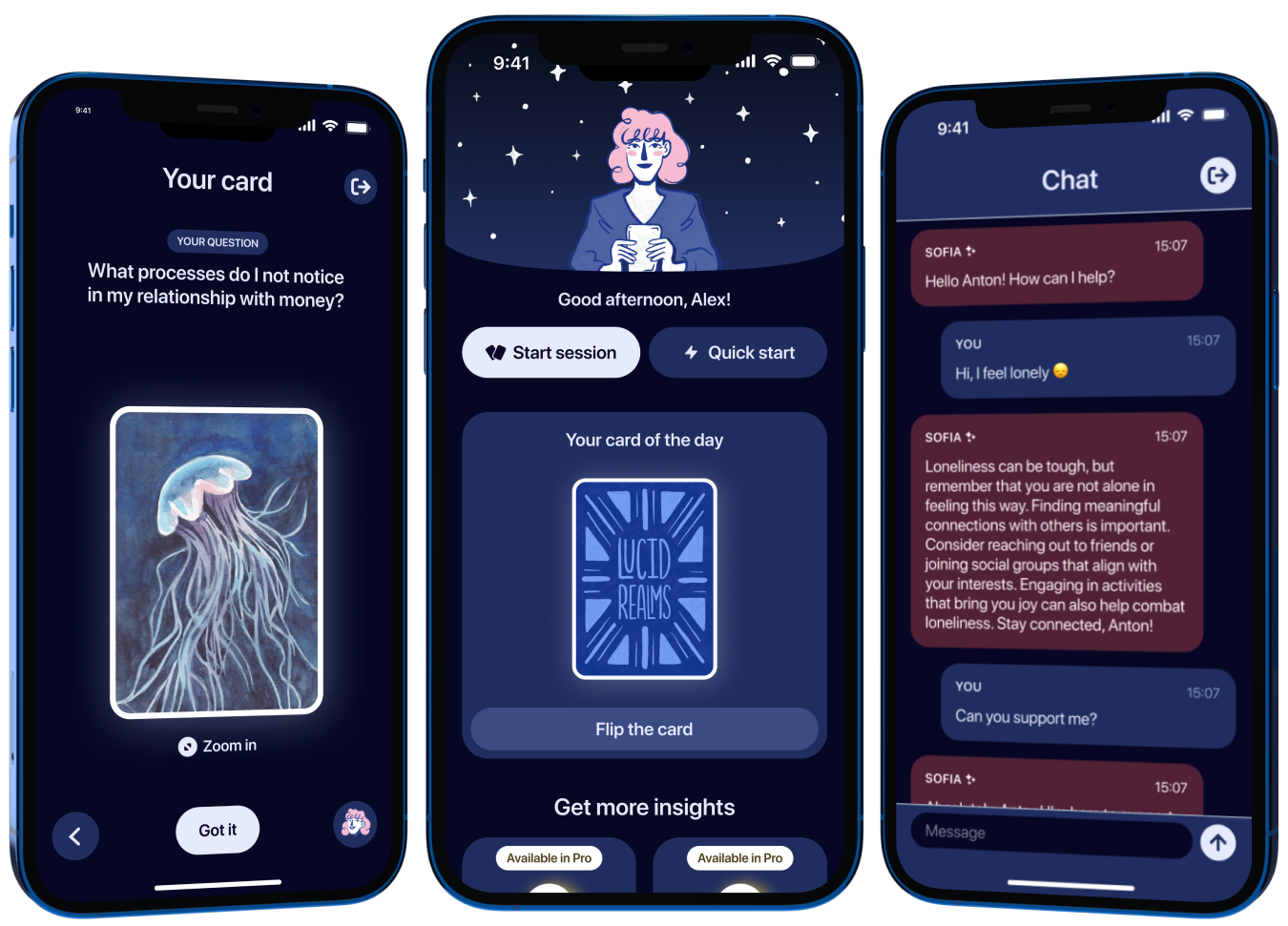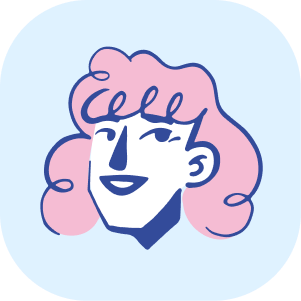We use cookies to give you a tasty experience!
Cookie Settings
We use cookies and data to:
Deliver an excellent service
Track outages and issues
Protect against spam, fraud and abuse
Measure site statistics to enhance the quality of our services
By continuing to browse our site, you’re agreeing to our use of cookies.
Deliver an excellent service
Track outages and issues
Protect against spam, fraud and abuse
Measure site statistics to enhance the quality of our services
By continuing to browse our site, you’re agreeing to our use of cookies.
The Role of Sleep Disturbances in Anxious-Depressive Disorders
Sleep disturbances such as insomnia, fragmented sleep, and restless sleep are extremely prevalent in patients with anxiety and depressive disorders. Research shows that up to 73% of patients seen in general clinical practice settings have insomnia. Among psychiatric patients, the rates may be even higher, with 65% of those with borderline personality disorder and 100% of those with PTSD showing evidence of insomnia on objective polysomnography testing.
The relationship between anxiety/depression and sleep problems appears to be bidirectional. On one hand, chronic sleep disturbances can lead to the development of full-blown anxiety and depressive disorders in predisposed individuals. Sleep deprivation causes impairment of prefrontal cortex cognitive functions similar to those seen in depression. On the other hand, anxiety and depression can also directly precipitate insomnia through hyperarousal and ruminations at bedtime. Patients end up in a vicious cycle where sleep loss leads to worsening of mental health symptoms, which in turn leads to worse sleep.
Several causal mechanisms may link anxiety/depression and sleep disturbances. Anxiety involves activation of the hypothalamic-pituitary-adrenal axis and increased cortisol secretion, which opposes normal sleep drive. Depressive disorders have been associated with imbalances in key neurotransmitters like serotonin that regulate sleep-wake cycles. Brain imaging studies show overactivity of stress-related amygdala circuits combined with hypoactivity of prefrontal cortex areas that initiate and maintain sleep.
The most common type of sleep disturbance seen in anxiety disorders is initial insomnia, or difficulty falling asleep. This manifests as prolonged sleep latency, taking more than 30 minutes to fall asleep. Patients with generalized anxiety disorder frequently report presleep worries and rumination about daily stressors that delay their ability to unwind at night. Nocturnal panic attacks also lead to disruption of sleep onset in those with panic disorders. In PTSD, nightmares related to traumatic experiences commonly occur during REM sleep leading to awakenings. Sleep paralysis upon awakening is also sometimes seen.
In major depressive disorder, sleep continuity disturbances like frequent nocturnal awakenings and early morning awakenings are most characteristic features. Patients report non-restorative sleep and impaired daytime function despite seemingly adequate total sleep times. Polysomnography often reveals shortened REM latency, decreased slow wave sleep, and shifts in circadian rhythms. The severity and duration of insomnia correlates closely with the level of depression. Treatment-resistant depression is associated with persistent sleep disturbances.
When depression manifests primarily as insomnia or hypersomnia, it may represent a masked or atypical subtype. However, primary insomnia also needs to be excluded. The two can be distinguished based on the presence of other subtle depressive symptoms and polysomnographic findings like impaired sleep efficiency in the atypical depression group.
In bipolar disorder, marked reduction in total sleep time occurs during manic episodes. Patients report little need for sleep. In contrast, hypersomnia may be seen during the depressed phase. Circadian rhythm disturbances are common with both manic and depressed episodes. This manifests as altered timings of sleep onset and offset.
Treatment of the primary underlying mental health disorder is the first priority. Psychotherapy and medications like SSRIs, SNRIs, and benzodiazepines alleviate anxiety and depression while also improving associated sleep problems. However, adjunctive short-term use of appropriate hypnotic medications can hasten sleep improvements during acute phases. This helps prevent worsening of anxiety/depression from sleep loss.
Rather than traditional GABAergic hypnotics like benzodiazepines and Z-drugs, alternative options like antihistamine medications (e.g. Valokordin-Doxylamine) and melatonin receptor agonists that act on different mechanisms show promise. Antihistamines reduce activity in arousal pathways in the brain rather than directly inducing sleep. Studies show doxylamine specifically can increase sleep duration, depth, and quality without residual daytime sedation or impacting sleep architecture. It may allow tapering of GABAergic hypnotics when used together. However, doxylamine should still be used cautiously and at lowest effective doses in the elderly and those with risks like sleep apnea.
In summary, disrupted sleep has a very high prevalence and adverse impact in anxiety and depressive disorders. A multifaceted approach combining psychotherapy, antidepressants/anxiolytics, and short-term hypnotics improves overall outcomes. The choice of hypnotic should be tailored to the individual patient profile and risks. As knowledge of neurobiological mechanisms grows, more targeted sleep medications can be developed. Adequate diagnosis and management of sleep disturbances along with the primary psychiatric disorder is key.
The relationship between anxiety/depression and sleep problems appears to be bidirectional. On one hand, chronic sleep disturbances can lead to the development of full-blown anxiety and depressive disorders in predisposed individuals. Sleep deprivation causes impairment of prefrontal cortex cognitive functions similar to those seen in depression. On the other hand, anxiety and depression can also directly precipitate insomnia through hyperarousal and ruminations at bedtime. Patients end up in a vicious cycle where sleep loss leads to worsening of mental health symptoms, which in turn leads to worse sleep.
Several causal mechanisms may link anxiety/depression and sleep disturbances. Anxiety involves activation of the hypothalamic-pituitary-adrenal axis and increased cortisol secretion, which opposes normal sleep drive. Depressive disorders have been associated with imbalances in key neurotransmitters like serotonin that regulate sleep-wake cycles. Brain imaging studies show overactivity of stress-related amygdala circuits combined with hypoactivity of prefrontal cortex areas that initiate and maintain sleep.
The most common type of sleep disturbance seen in anxiety disorders is initial insomnia, or difficulty falling asleep. This manifests as prolonged sleep latency, taking more than 30 minutes to fall asleep. Patients with generalized anxiety disorder frequently report presleep worries and rumination about daily stressors that delay their ability to unwind at night. Nocturnal panic attacks also lead to disruption of sleep onset in those with panic disorders. In PTSD, nightmares related to traumatic experiences commonly occur during REM sleep leading to awakenings. Sleep paralysis upon awakening is also sometimes seen.
In major depressive disorder, sleep continuity disturbances like frequent nocturnal awakenings and early morning awakenings are most characteristic features. Patients report non-restorative sleep and impaired daytime function despite seemingly adequate total sleep times. Polysomnography often reveals shortened REM latency, decreased slow wave sleep, and shifts in circadian rhythms. The severity and duration of insomnia correlates closely with the level of depression. Treatment-resistant depression is associated with persistent sleep disturbances.
When depression manifests primarily as insomnia or hypersomnia, it may represent a masked or atypical subtype. However, primary insomnia also needs to be excluded. The two can be distinguished based on the presence of other subtle depressive symptoms and polysomnographic findings like impaired sleep efficiency in the atypical depression group.
In bipolar disorder, marked reduction in total sleep time occurs during manic episodes. Patients report little need for sleep. In contrast, hypersomnia may be seen during the depressed phase. Circadian rhythm disturbances are common with both manic and depressed episodes. This manifests as altered timings of sleep onset and offset.
Treatment of the primary underlying mental health disorder is the first priority. Psychotherapy and medications like SSRIs, SNRIs, and benzodiazepines alleviate anxiety and depression while also improving associated sleep problems. However, adjunctive short-term use of appropriate hypnotic medications can hasten sleep improvements during acute phases. This helps prevent worsening of anxiety/depression from sleep loss.
Rather than traditional GABAergic hypnotics like benzodiazepines and Z-drugs, alternative options like antihistamine medications (e.g. Valokordin-Doxylamine) and melatonin receptor agonists that act on different mechanisms show promise. Antihistamines reduce activity in arousal pathways in the brain rather than directly inducing sleep. Studies show doxylamine specifically can increase sleep duration, depth, and quality without residual daytime sedation or impacting sleep architecture. It may allow tapering of GABAergic hypnotics when used together. However, doxylamine should still be used cautiously and at lowest effective doses in the elderly and those with risks like sleep apnea.
In summary, disrupted sleep has a very high prevalence and adverse impact in anxiety and depressive disorders. A multifaceted approach combining psychotherapy, antidepressants/anxiolytics, and short-term hypnotics improves overall outcomes. The choice of hypnotic should be tailored to the individual patient profile and risks. As knowledge of neurobiological mechanisms grows, more targeted sleep medications can be developed. Adequate diagnosis and management of sleep disturbances along with the primary psychiatric disorder is key.





